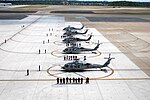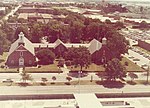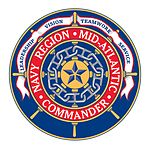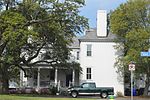Joint Forces Staff College
1946 establishments in VirginiaEducation in Norfolk, VirginiaEducational institutions established in 1946Military academies of the United StatesMilitary in Norfolk, Virginia ... and 3 more
Staff collegesUniversities and colleges in VirginiaUse American English from August 2022

The Joint Forces Staff College (JFSC), located in Norfolk, Virginia, was established as the Armed Forces Staff College in 1946 and incorporated into the National Defense University in August 1981. It educates and acculturates joint and multinational warfighters to plan and lead at the operational level. Military operations increasingly require the Armed Services to work jointly, and JFSC provides students the tools to operate in a joint environment. JFSC is composed of three schools, each with different student populations and purposes.
Excerpt from the Wikipedia article Joint Forces Staff College (License: CC BY-SA 3.0, Authors, Images).Joint Forces Staff College
Eniwetok Avenue, Norfolk
Geographical coordinates (GPS) Address Nearby Places Show on map
Geographical coordinates (GPS)
| Latitude | Longitude |
|---|---|
| N 36.920555555556 ° | E -76.309722222222 ° |
Address
Joint Armed Forces Staff College
Eniwetok Avenue
23501 Norfolk
Virginia, United States
Open on Google Maps









